Do you have a garden in your house? Well, why not plant adianthusin it? It’s not the traditional flower we think of first in mind. When beautifying agarden with flowers, people usually go with the rose. Sure, it is the most generic choice. However, why not try something new? Why not go against the trend and go withdianthusplants?
But before you rush to buy the seeds and plant them in your garden, learn a thing or two about the history of the plant!
Now, the story behind the flower is older than you might expect. Greeks mentionedDianthus caryophyllus, a variety of flowers, 2,000 years ago. Theophrastus, a Greek botanist, coined the term we use today. It comes from two words — dios (divine) and anthos (flower). So, if looking at it literally,dianthusis a divine flower. It is a perfect addition to your version of the Garden of Eve.
In those 2000 years,dianthusflowers became quite popular. One might even say that it rivals the classical rose. It is all thanks to the symbolism behind the flower. While the name might hint at religious traditions,dianthusflowers are commonly associated with the same virtues as roses. Love, affection, and admiration are all associated with these flowers.
Still interested in this beauty of a flower? Well, stroll through our planting anddianthus careguide. We will talk about the ins and outs of this plant, from where to plant it to the pests that might attack it. Also, we will answer some general questions at the very end.
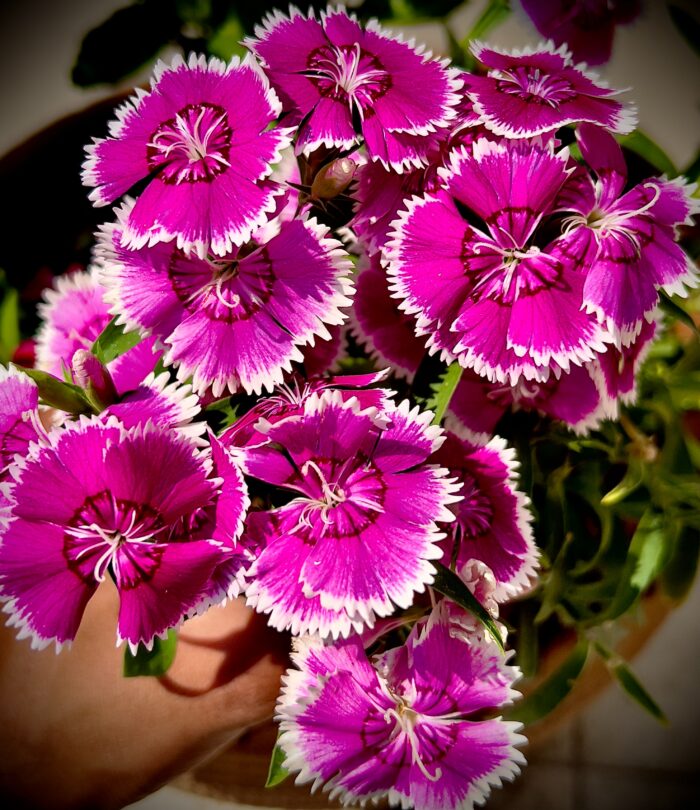
Pros And Cons of GrowingDianthusFlowers In Pot or Ground
To understand the ins and outs ofdianthus care, you might want to learn the advantages and disadvantages of growing it. The pros and cons of growing this flower depend on whether it is in the ground or a pot. Where it is growing, the plant will benefit and suffer differently.
Pot-GrownDianthusFlowers
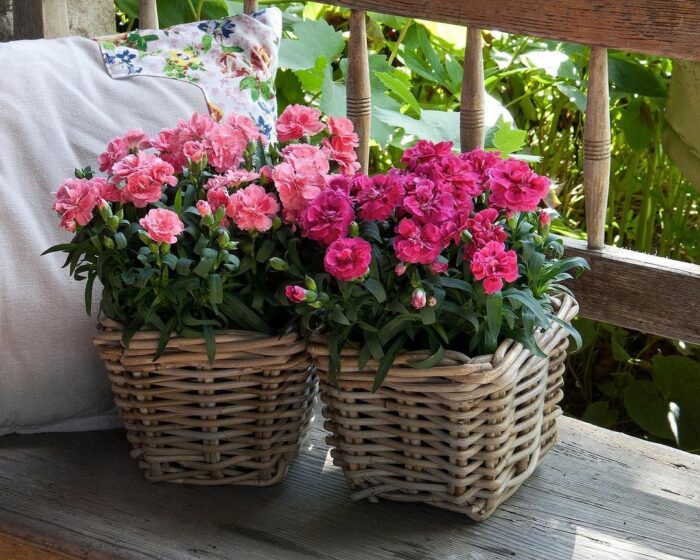
Usually, growing these divine flowers in a pot can provide several significant benefits. Since it is in a pot, you can move it wherever you want. You can move it from outside to inside with simple ease. Secondly, you can easily maintain the nutrients in the soil. Also, the pot protectsdianthusfrom significant pests and hazards.
However, the same protection creates some constrictions. The pot stops the root canal from expanding too much. The small space can also create other problems for yourdianthus barbatusflower. Water has a more challenging time to drain away, and thus rot can develop.
Ground GrownDianthusFlowers
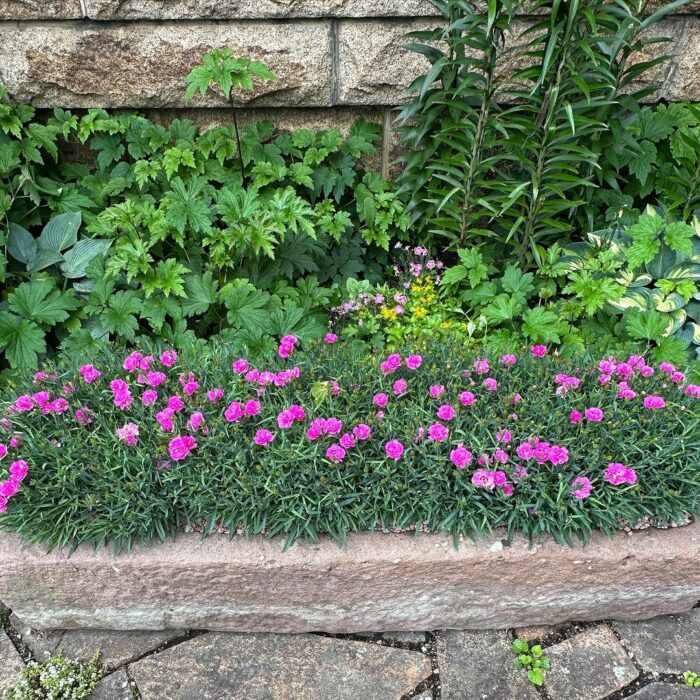
The freedom that the ground provides benefits for thedianthus careprocess. The ground allows for the flower to have an extensive root canal. The large root canal drinks up excess water, keeping the plant flourishing without watering it too often. Also, you don’t need to buy dirt if your yard has enough soil.
Most PopularDianthusFlower Varieties
Dianthus Caryophyllus
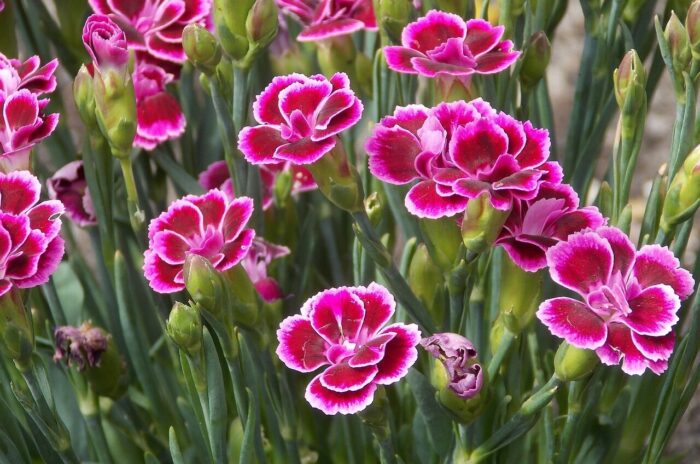
As mentioned above,dianthus caryophyllusis the flower that caught the attention of the Greeks. Native to the Mediterranean region, it is also known as clove pink or, more commonly, coronations. Initially, only pinkish-purple flowers grew. However, cultivators have created white, green, and even red coronations.
Dianthus Chinensis

This variant is quite colorful. Growing natively in East Asia, thedianthus chinensis(the most scientific name ever heard) gets cultivated for its looks alone. The colors have quite a range. The palettes can range from pink to white and even dark red. So, if you want a garden full of vibrant flowers, plant some to bring out the colors.
Dianthus Barbatus
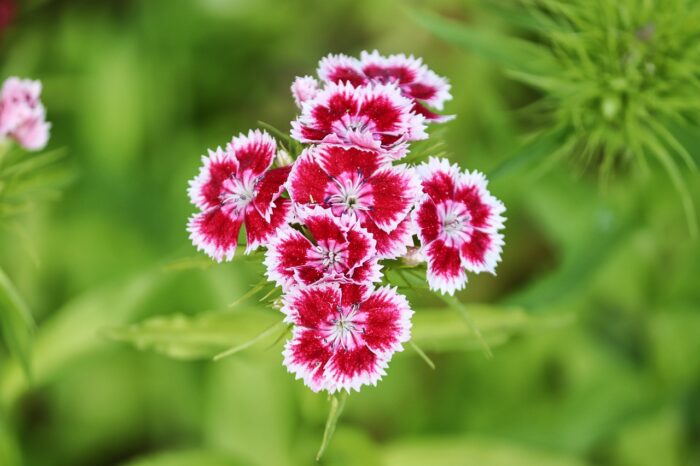
Non-toxic, you can eat thedianthus barbatusvariety of flowers. Known as Sweet William, this beauty grows in clusters. Up to 30 flowers can grow on top of the stems. There are two variants of thisdianthusflower — European and Asian. The difference is in leaves, with European ones being broader, up to 2 centimeters.
Dianthus Deltoides
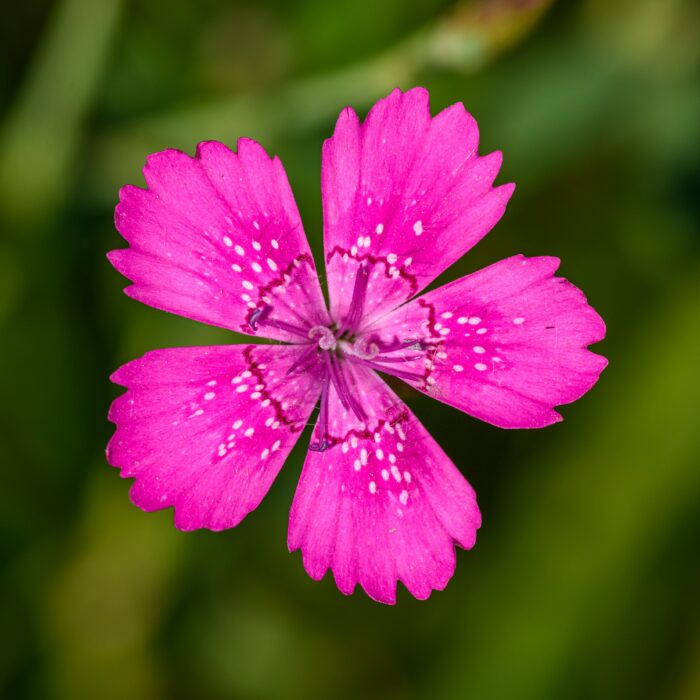
Dianthus deltoidescomes close to beating even the mostbeautiful of tattoos. The flowers are just 1.5 to 2 centimeters long, but so much beauty fits in that space. These flowers are usually pink, but there are white ones, too. The flower is native to Western Asia and Europe. It’s a beautiful addition to your garden, acting like spice.
Dianthus Pink Kisses
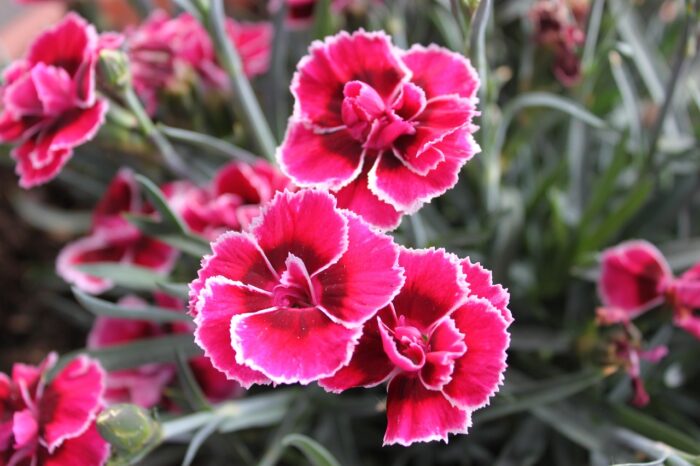
As the name gives out, they are pink and act like kisses to our eyes.Dianthus pink kissesare the safe solution for any new gardener. Beautiful and plentiful, they are easy to plant and easier to maintain. It’s best to grow these at the front of your garden, as they will require a lot of sunlight to flourish.
Planting Dianthus Flowers
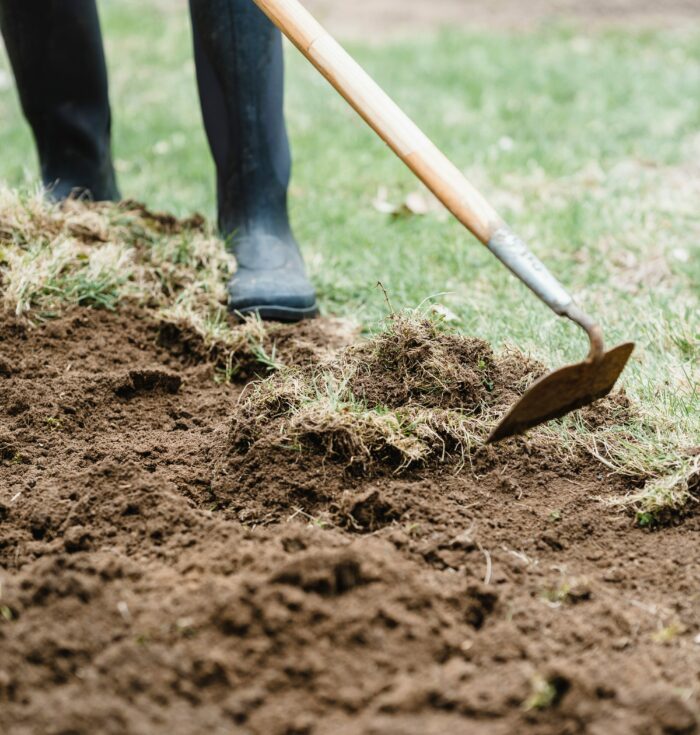
Growing something from scratch is challenging. It’s not as easy as sticking some seeds in the ground (for the most part). There are some factors you have to account for. From soil to fertilizer and the time of the year, sincedianthus perennial(majority of flowers) are planted once, take the time to learn the craft.
Best Dirt For YourDianthusPlants
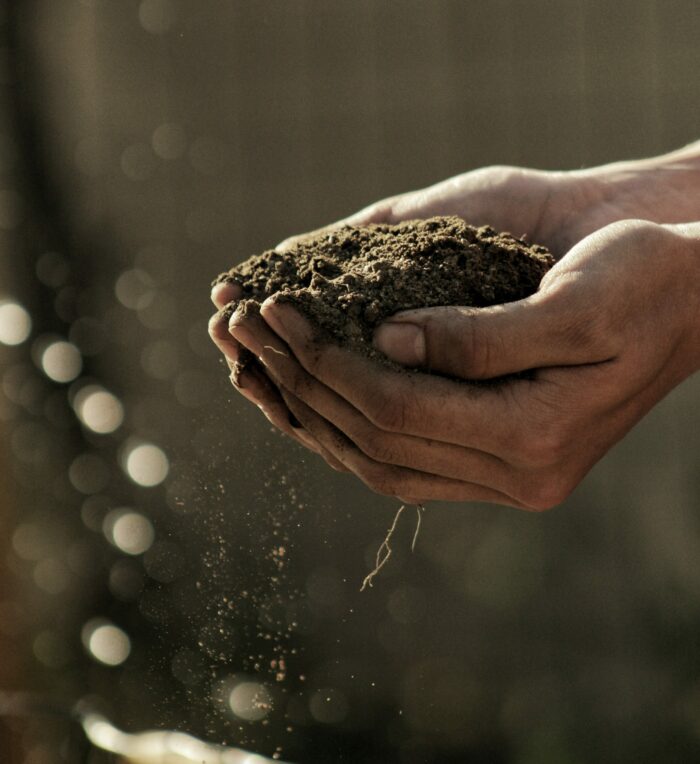
Everything starts from the ground up, the dirt itself. The dirt must be rich for mostdianthusflowers (caryophyllus, barbatus, and pink kisses), not money-wise. The soil should contain a lot of substances in it.
The most important thing is to keep the dirt at certain levels of water and acidity. The dirt has to be damped, but not too much. The water has to flow easily. Also, it is vital to take notice of the PH level. Too much acidity could lead to a plant withering away. We suggest a more alkaline soil.
Fertilize Your Soil
Dianthus perennialflowers grow for over two years (in most cases). It’s best to start the right way. The soil will do most of the work for the next two years, so picking the right fertilizer is essential. It’s best to go with two:
Luckily, when it comes to thedianthus careprocess, the fertilizer can work slowly. The longer it lasts — the better it is for thedianthusflowers.
Best Time and Place To Plant
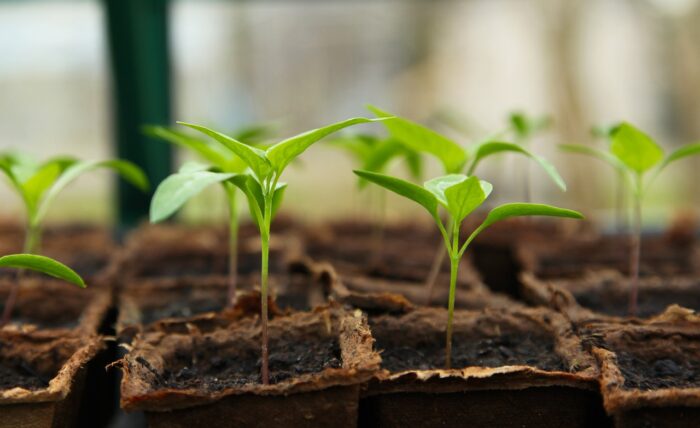
The right place and time can make all the difference regardingdianthus care. If you are growing from the seed, you must plant them in the early spring months. If planting outside right from the start, do so in the months when frost occurs. However, if you start indoors, do so 10 to 12 weeks before the last spring frost occurs.
However, you can also plant slightly growndianthusflowers. If you are planting this way, you might want to do it during the cooler months to encourage the growth of deeper roots. It is best to plant these grown plants during the early spring and late fall months. Since you are planting them for the long term, you might as well pick the correct location.
MaintainingDianthusFlowers
When you plant the flower, all you need to do now is to maintain it. The better you keep an eye on it — the healthier your plant will be. If you take good care of the plant, thedianthusflower will keep the beauty of your garden up and even provide some ingredients for your food. So, we have compiled a relatively simple five-step maintenance guide and a simple harvesting tutorial.
The Six-Step Guide toDianthus Care
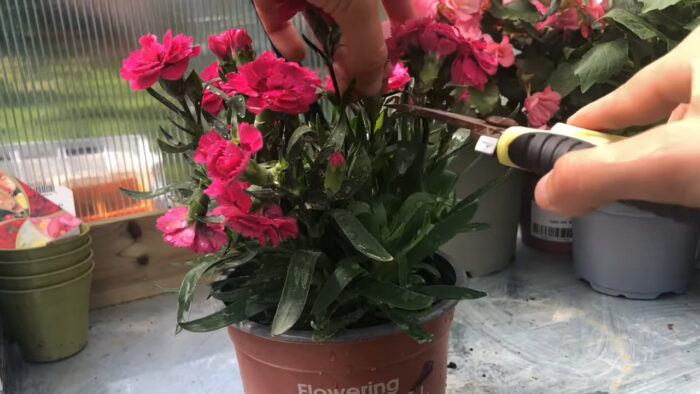
Even a starter can easily maintain a garden full of dianthus flowers. If it is your first time growing them — we have compiled the five things you need to look out for.
PropagatingDianthusFlower
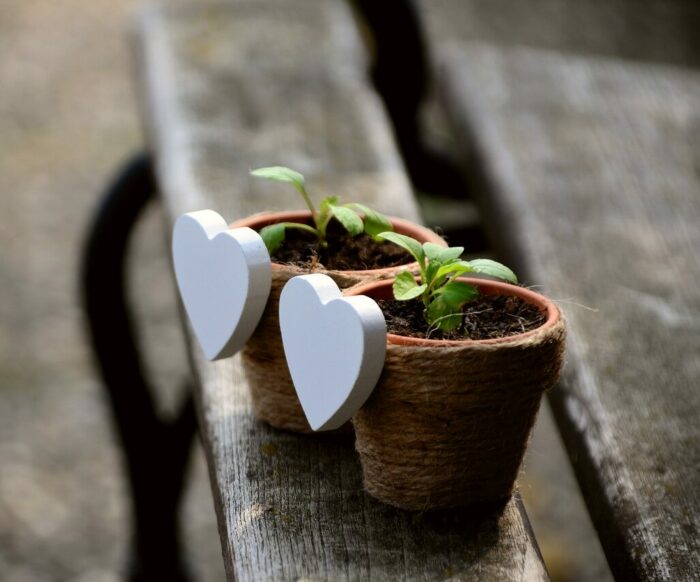
Cut a few non-flowering stems from a healthydianthusplant during summer.
Leave 4 to 5 sets of leaves on the top part, cutting off the rest.
Plant the stems into a pot of compost or potting soil.
Water the plant.
Place the pots in a well-lit space.
After 4 to 5 weeks, the plants should start to root.
Plant them in pots or on the ground when spring comes.
Common Problems Linked WithDianthus
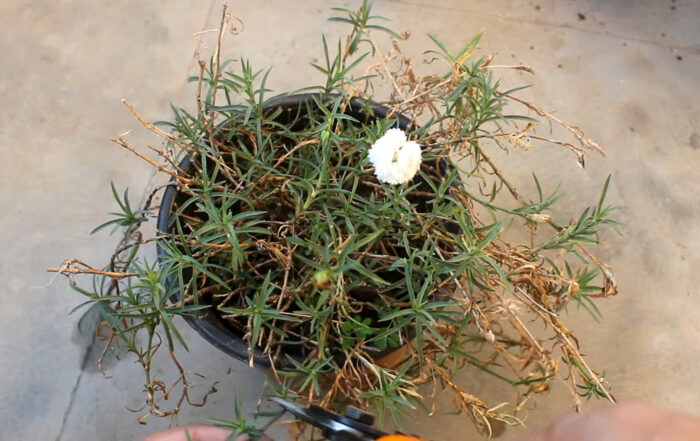
Sometimes, problems can occur. Even the most beautiful dianthus pink kisses can make your day quite bad. Usually, these problems come in the form of pests and diseases. For the most part,dianthusflowers tend to attract several pests.
The best cure for these pests is through maintenance and usage of additional chemicals. Also, the plant is prone to catching some diseases. Thedianthus careprocess is the best way to fight off ugly diseases and keep your plant alive and healthy. Depending on the situation, you can fight these diseases in different ways.
Practical Use ofDianthusFlowers
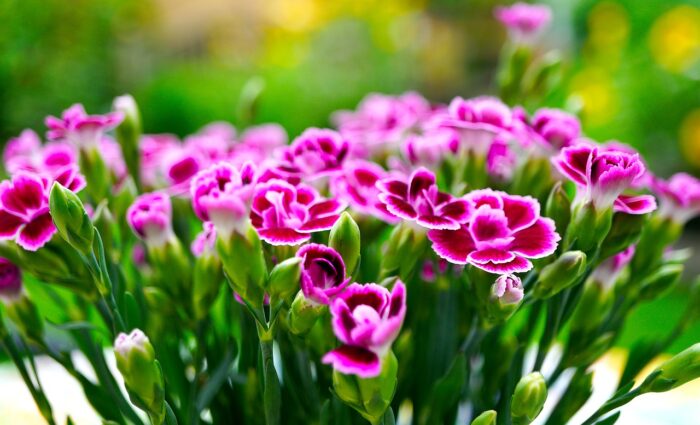
Now that your beautiful flowers are blooming, you might want to know — is there more to them? These plants are not only beautiful but also rather practical. With so many different varieties, you can find the use even for the most basicdianthus pink kisses. From medicine and food to decorations, a creative mind will always find a way to use them.
Medically, several varieties of this flower contain interesting chemicals.Dianthus barbatusvariety, for example, contains saponins, a chemical found in fire extinguishers and steroids. However, other flowers have chemicals that bring even more benefits to the person.
You might not know it, butdianthusflowers also see usage in the world of cooking. However, you must be careful with your varieties, as some can be lethal. However, people have found some usage with the edible ones.

Since it is a flower, you can also usedianthusforunique decorations. With such a large variety, it is easy to think of a million ideas where you can use them. Universally, these flowers spice and beautify gardens around the world. However, cultures found other uses for multiple varieties of this plant.
So, if beauty alone is not enough for you, our suggestions might help you. Just don’t go over the board with the flowers. Make sure to use them moderately. You don’t want to stick the flowers into every dish you will cook.
FAQ About Dianthus Flowers
What is the life cycle ofdianthus?
You have a wide choice regarding the lifespan of the plant. You will find thatdianthus perennialflowers can live for more than two years. Biennial flowers will live for around two years. However, if you want more temporary plants — go with annual ones. They will live for a year, and then that is it.
What pairs withdianthus?
Alone — these flowers are already beautiful. Why not add some spice to the mix? You can always mix one or two varieties and get various colors. However, you might want to incorporate a rose or two into the garden. These flowers complement each other rather perfectly.You May LikePeople Are Sharing Their Decked-Out Bedrooms, And Here Are 30 Of The Most Amazing OnesŽydrūnė TrukanavičiūtėLearn How to Plant, Grow, and Maintain a Beautiful Bottle Brush TreeNatallia Pisarenka20 Best Herbs To Grow At Home (Even If You’re A Total Beginner)Beatričė Varnaitė
Žydrūnė Trukanavičiūtė
Natallia Pisarenka
Beatričė Varnaitė
Home & Design